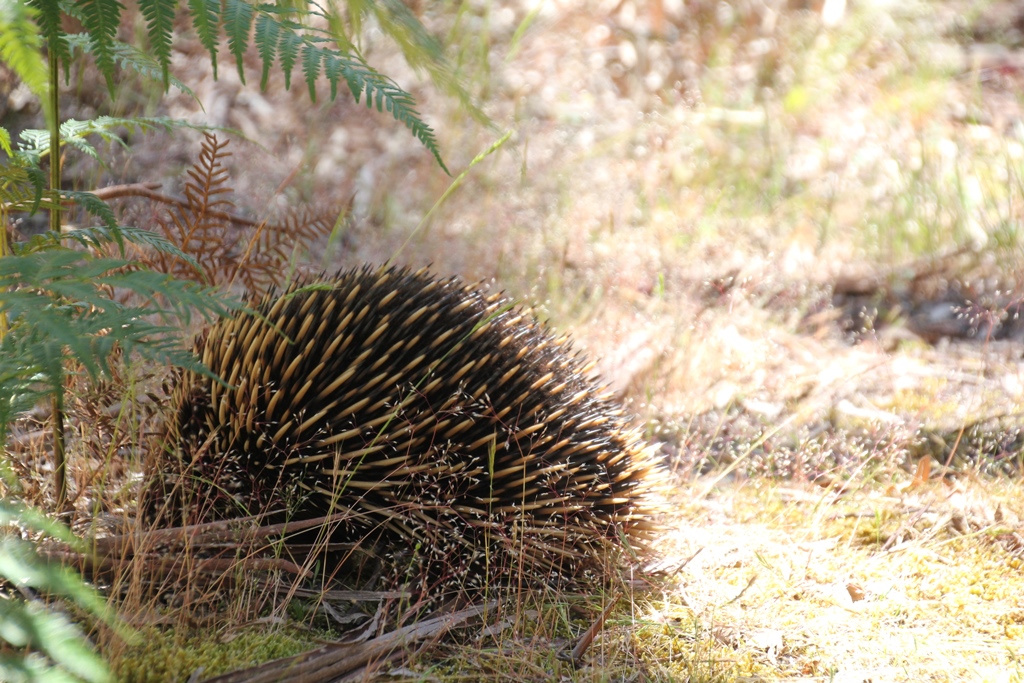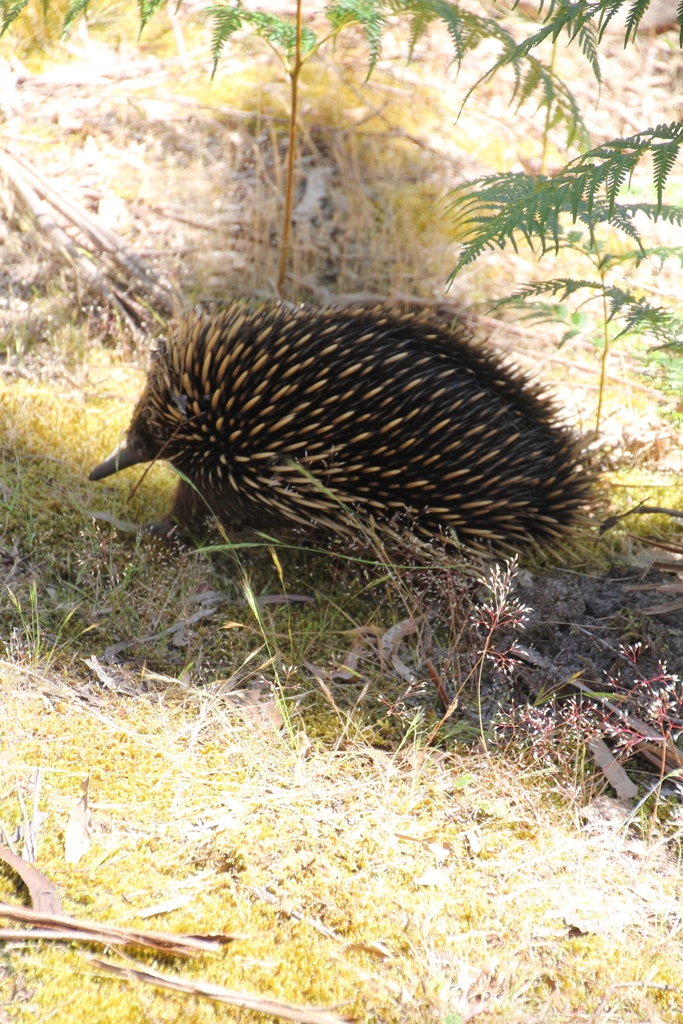For more than a year I have been finding holes dug by Echidnas – usually around ant nests and plant roots – without having even the smallest glimpse of an Echidna. There was a moment, about a month ago, where someone thought they saw one. By the time I got my camera out and we got close to the spot, the Echidna was long gone.
This morning, I was walking around the track inside our boundary fence with my sister and an Echidna just wandered onto the path in front of us. It wasn’t in a hurry, nosing around some fallen bark under a bracken frond for a while, then ambling back into the bush. Woo hoo! At last!
Echidnas are monotremes, which means they are egg laying mammals. The female Echidna will lay a single egg (which has a leathery casing) and carry this around with her in a temporary pouch. When the young Echidna emerges, she will suckle it from milk producing patches resembling pores. When the spines begin to form, after 45 to 5 days, the female places the baby, known as a puggle, into a nursery burrow, and plugs the entrance to keep it safe. She roams around looking for food, and returns to feed the puggle every few days.
When disturbed or frightened, Echidnas begin to dig into the ground, so that the only parts remaining above ground are the spines. They can do this very quickly and are very difficult to dislodge. It is a very effective defence strategy.
A few more details are contained in the captions beneath the following photographs.







Hi Lisa, Yay, congratulations! You were able to get some great photos. It can’t have been fearful of you. love,H
Date: Sun, 1 Dec 2013 07:04:14 +0000 To: heathers7@hotmail.com
Thanks Heather, you’re right, it didn’t seem to be afraid. For one moment, it seemed to be taking a defensive ‘ball of spines’ pose, but I took a step back and it resumed nosing around the bark. 🙂 Lisa
That is awesome! I love seeing your posts of the animals in Australia, although I doubt I’ll ever get the chance to see them,
Thanks Alastair! I’m still so ecstatic to have seen the Echidna, and to have been close enough to take some photos is a bonus. The next elusive animal to photograph is the long necked turtles in the dam, which are so shy they dive on first sight of anyone… And you never know, you may get here one day. I hope so. Lisa